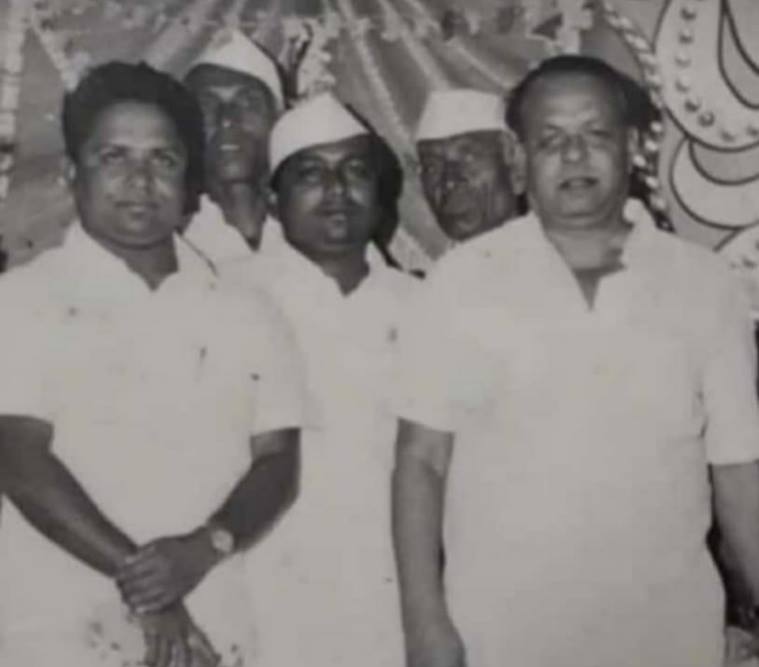 The Pimpri-Chinchwad Municipal Corporation building.
The Pimpri-Chinchwad Municipal Corporation building. On this day 51 years ago, Pimpri-Chinchwad came into existence after the Maharashtra government decided to merge four gram panchayats of Pimpri, Chinchwad, Bhosari and Akurdi into Pimpri-Chinchwad Municipal Council. Ever since, the northwestern city limits of Pune has grown leaps and bounds, evident from its annual budget, which has now gone beyond Rs 7,000 crore from Rs 1 crore initially.
Dnyaneswhar Landge, who was the first vice-president of the council, recalls, “Pimpri-Chinchwad, since its establishment 50-years-ago, has grown rapidly. It has often being called as the most rapidly developed city in Asia. Industry-wise, it is the number one in Maharashtra. No other city in Maharashtra has such a vast network of industrial establishments.”
Landge, now 81, was the sarpanch of Bhosarigaon when it was merged into the council. Annasaheb Magar, then Haveli MLA, was appointed the council president in 1970.
The first election to the municipal council was held in 1978 on 32 wards. The council existed till 1982 when the state government decided to upgrade it to municipal corporation status. The Pimpri-Chinchwad Municipal Corporation thus came into existence on October 11, 1982.
 Annasaheb Magar, council president and Dnyabeshwar Landge, vice-president in 1970.
Annasaheb Magar, council president and Dnyabeshwar Landge, vice-president in 1970.
When the first civic general elections were held in 1986, Landge was elected as the mayor of Pimpri-Chinchwad. He subsequently went on to become Haveli MLA.
“The elections were held on party basis. A Janata Party-supported committee headed by Dr S S Ghare was elected to rule the council. Dr Ghare became the president,” recalled Landge, who was also instrumental in setting up Pavana Sahakari Bank in 1974, which has branches across the industrial city.
Gajanan Babar, who was elected in 1978 as the councillor, recalled, “When Pimpri-Chinchwad came into existence, the PCMC did not even have its own building. It used to function from rented premises in Akurdi.”
According to Babar, the state of roads then was atrocious, the drainage system was not in existence, public toilets were hard to locate and no overbridges could be spotted. “The first bridge if I remember correctly was the Pimpri overbridge which came into existence in 1972. Now, there are bridges and flyovers across the industrial city,” he said.
Babar, who was elected twice as Maval MP, further said, “The Bhosari industrial belt came into existence in 1962. There were a handful of industries. The number is now more than 5,000 small, large and big industrial units.”
Though the decision regarding Pimpri-Chinchwad city was taken in 1970, the council came into existence in 1972, Babar said. “Annasaheb Magar functioned as the president till 1978. He used to present the budget which was less than Rs one crore. After that in 1978, N R Shinde was the CEO of the council. In 1982 when the municipal corporation came into being, Harnam Singh was the administrator. It was during Harnam Singh’s period, the famous “green necklace” or green belt of Pimpri-Chinchwad took shape as he launched a massive tree plantation drive,” he said.
PCMC corporator Babu Nair, who has closely followed the civic functioning and the growth of the city, said, “After the municipal corporation was set up in 1986, the Congress dominated the PCMC for at least three terms. It subsequently joined hands with NCP and ruled for two terms. It was only in 2017, BJP for the first time came power in Pimpri-Chinchwad.”
– Stay updated with the latest Pune news. Follow Express Pune on Twitter here and on Facebook here. You can also join our Express Pune Telegram channel here.
Nair said the council budget was no more than Rs 1 crore. “Pimpri-Chinchwad’s budget has now gone beyond Rs 7,000 crore which symbolises the leaps and bounds growth of the city,” he said.
PCMC Additional Municipal Commissioner Ulhas Jagtap said, “When Pimpri-Chinchwad came into existence, there were only four gram panchayats. The area was very small. Today, it stands on 181 sq km area. The annual civic budget was less than a crore then. Now, it is over Rs 7,000 crore.”